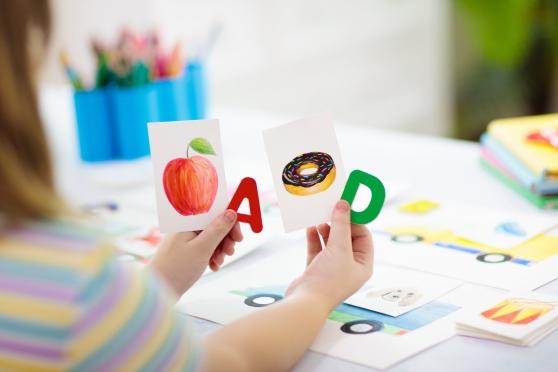
When my son was in 1st grade, he came home from school with a bookmark decorated with cute cartoon animals nicknamed in ways that promised to help him read challenging words.
Skippy Frog encouraged him to “skip the tricky word, read to the end, go back and try it again!” Eagle Eye suggested looking at the picture and asking, “What is in the picture that starts with this beginning letter?”
Having worked with struggling readers as a teacher and an Academic Intervention Services provider, I cringed.
“Those strategies represent what people who are struggling to read do to ‘get by,’” says Marjorie James, a speech teacher at the East Elmhurst Community School in Queens. “We shouldn’t be teaching kids to be good guessers. When we teach those strategies, we’re teaching them to just get by instead of learning to crack the code.”
Scientists, researchers and educators have debated the key to cracking the code for decades. Most now agree on the need to focus on phonics.
Phonics instruction has fallen in and out of favor for years, largely because it can seem scripted and rote to teachers who want to ignite students’ passion for reading — in a 2020 New York Times story, some experts fretted it could be “stultifying.” But phonics is undeniably effective: A University of Oregon College of Education report notes that “there is considerable evidence that the primary difference between good and poor readers lies in the good reader’s phonological processing ability,” a skill that is bolstered by strong phonics instruction.
Many of the strategies we teach students today — like Skippy Frog and Eagle Eye — are based on a “cueing” philosophy of reading that was developed by psychologist Marie Clay in the 1960s.
If you’ve ever used a running record to assess students in reading, you’re probably familiar with the concept of “MSV” cues — meaning, structure/syntax and visual. Clay theorized that children rely on these three kinds of cues to make real-time predictions about words as they read. When students come to an unfamiliar word, we in turn “cue” them by asking questions about what the word could be: What would make sense (meaning)? What would sound right in the sentence (syntax)? What clue does the picture give (visual)?
These strategies can help children who are stuck, and they might be effective tips for students who have already mastered the basics of letter-sound correspondence. But they largely do not help children decode the words themselves — that is, do the actual work of reading.
In fact, research shows that strategies like checking the picture or puzzling over the context takes children’s focus away from the actual letters and sounds in the word, making it less likely they’ll recognize it the next time.
“When I work with struggling readers, I block the picture, or I show them nonsense words. I take away all the context because I want to make sure they can actually read the word itself,” says James. A comprehensive 2019 American Public Media study of the history of reading instruction asserted that “one of the most consistent and well-replicated findings in all of reading research” is that “the ability to read words in isolation quickly and accurately is the hallmark of being a skilled reader.”
Then how do we learn to read words in isolation quickly and accurately? The real key to cracking that code lies in targeted, routine phonics instruction.
“There are 44 distinct sounds in the English language, and there are 250 ways to represent those sounds with letters as graphemes,” says Maryse Crevecouer-Charles, an IEP teacher at PS 6 in Flatbush, Brooklyn. (For instance, the sound /k/ can appear in words as c, k, ck, que and ch.) “We need to teach that strategically.”
IEP teachers who work with at-risk readers in the city’s schools are already using research-based reading programs that emphasize phonics. Students learn and practice reading individual letters and the sounds they make; then they progress to more complex graphemes.
Elena Lazarova, who trained special education teachers at her school to use SPIRE — an intensive, highly structured reading intervention — says that explicit, systematic phonics instruction works because “it allows students to master skills incrementally, bit by bit.”
After a year in which instruction was disrupted by the pandemic, that back-to-basics approach may be especially important to help struggling readers take concrete steps toward progress.
“Any moment when a kid feels like, ‘I can’t read this, it’s too difficult’ — that’s an automatic shutoff of all the brain processes required for reading development,” Lazarova says. “The feeling of success is what creates a little dopamine hit that makes kids think, ‘I can do this.’”